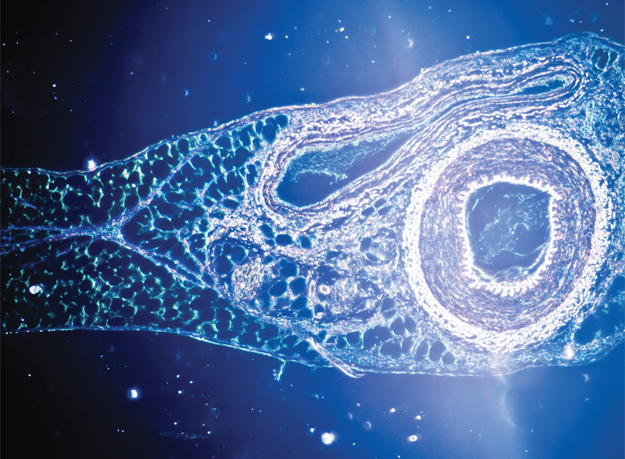
Hailing from Lahore and working in the Gulf, this migrant worker was the first Pakistani to be reported HIV positive back in 1987. The same year, the first husband to wife to child transmission of the virus was reported in Rawalpindi.
1987 is considered a watershed year for AIDS in Pakistan. Spurred by worldwide hysteria and apocalyptic warnings of an incurable global pandemic, the government set up the Federal Committee on AIDS, which later became the National AIDS Control Programme (NACP).
“It was however a year earlier that the first death due to AIDS, that of an African sailor, was reported in Karachi,” says Dr M Ashraf Memon of the Sindh Aids Programme.
For a few short years, it seemed Pakistan may have dodged the bullet, but then in 1993, a baby tested positive for HIV in Karachi. He had been infected by his mother’s breast milk.
In the 26 years that have passed since Patient Zero, at least 5,800 Pakistanis have lost their lives as a result of the HIV virus and estimates of the total number of cases ranges from 14,000 to 125,000, depending on who you talk to. Pakistan has gone from being a ‘low prevalence high risk’ country to one that is in the ‘concentrated’ phase of the epidemic. It goes without saying that people are neither screened enough, nor are all cases reported.
A spreading danger
“The disease is much more prevalent now,” says Head of Infectious Diseases at Sindh Institute of Urology and Transplantation (SIUT) Dr Shehla Baqi. “Two decades ago, HIV cases in Pakistan were mostly persons who had acquired the infection from contact with commercial sex workers in Gulf countries. Most of them were then deported to Pakistan when they tested positive for HIV/Aids on pre-employment screening in the Gulf.”
Experts believe these workers, who returned to Pakistan with the infection, then spread it to their unknowing spouses and then on to their children. Since then, the methods of transmission have changed drastically.
From a relatively limited group of deported migrant workers, the high risk groups have expanded to include long distance truck drivers, sailors, female sex workers, hijra sex workers, men having sex with men (MSMs), injecting drug users (IDUs), prisoners, children born to infected parent(s), street children and victims of unsafe medical procedures.
The first outbreak of HIV among IDUs was reported in Larkana in 2003. Larkana, according to many medical professionals, is one of the places that have played a key role in the spread of HIV and Aids by virtue of it being a major trucking route. Globally, it has been observed that locations which offer great population movement play a vital part in the transmission of disease, infections and viruses. This is because as people gather at these spots, others come to cater to the travellers; these include high-risk groups like prostitutes and drug traffickers and addicts. Most-at-risk Populations (MARPs) are also at high risk of spreading the virus to their spouses or partners.
If estimates are anything to go by, it seems like the disease has spread exponentially since the late 80’s. But what is unclear is whether this is because greater awareness has led to increased detection of the virus (known as the ‘detection bias’) or whether the virus itself has spread. “The fundamental technical techniques of HIV detection remain the same,” explains Dr Faisal Sultan, Chief executive officer for Shaukat Khanum Memorial Cancer Hospital and Research Centre. “They are based on a fairly simple blood test. The challenge is how and where to use the test. In the US, there has been a movement to test pretty much everyone — this was driven by the fact that they felt that even there the timely detection of cases was not happening.”
The question of how many HIV/AIDS cases there are in Pakistan is a hotly debated one in the medical community. According to members of the Punjab and Sindh Enhanced HIV and Aids Control Programme, the number of HIV and Aids cases in Pakistan is only around 14,000.
Others, like Sultan, say that those figures are only the tip of the iceberg. “The estimate of total cases is about 95,000, while those actually detected are less than 10,000 so if you do the math you see that well below 10 per cent of cases are actually detected. Do remember, these are estimates only.”
In 2010, the National Aids Control Programme (NACP) reported that the number had risen to an estimated 97,400 HIV cases.
And if determining the number of cases is a difficult task, determining the rate of the spread of the disease is even harder.
“The rate of spread has to do with incidence, or the number of new cases per year, while the above figures are of the prevalence, or the existing cases. Thus these figures are not directly related to each other,” adds Dr Sultan. “Incidence data is very hard to come by in large, complex countries like Pakistan, which have mixed health systems.”
Dr Salman Shahid, Director for the Punjab Aids Programme disagrees, insists that figures for HIV and Aids in the country are nowhere near the six-digit mark. “Actually the figures are quite low,” he says. “This is because the disease is not found in the general population, but in about 0.1 per cent of the population. But it is true that the prevalence has increased, especially over the last two years, among specific groups.”
Who is most at risk?
The obvious question is: who are these specific groups? At the top of this list are IDUs. These IDUs vary in age but most, if not all, are male. Many drug addicts end up sharing needles and syringes, either not realising or not caring about the great risk they put themselves at. If even a single person among them is infected, a shared needle means that the entire group is at risk. According to data collected by the National Aids Control Programme (NACP) from 2005 to 2007, an IDU injects himself about two to three times a day. “The overall burden of HIV infection among drug users is about 20 per cent,”says Dr Altaf.
“Pakistan is experiencing a concentrated level of the spread since 2004,” explains former head of the Sindh Aids Control Programme Dr Arshad Altaf. “The spread was initially driven by IDUs but other risk groups have emerged since then such as hijra sex workers and MSMs.” Then there are the ‘innocent bystanders’ comprising of the spouses, and ultimately the children of IDUs and sex workers. According to a study by the National Aids Programme in 2004, ‘nearly half of all IDUs and sex workers are married.’
While the prevalence of HIV among IDUs is considered to be around 20% of the total IDU population, the figures vary from area to area. Some surveys found 42 per cent prevalence in Sindh and up to 50 per cent in some cities in Punjab. Some sample surveys conducted by social welfare groups reported over 50 per cent prevalence among IDUs in Peshawar.
“Injecting drug use is the major risk factor in the spread of HIV, but [the problem is compounded because] injecting drug users are also likely to engage in high risk sexual activities.” Baqi says. “However, they most likely acquired HIV through IDU,” she adds.
The next high-risk group is comprised of sex workers, and even within this group, there are distinctions. A study titled HIV epidemic in Pakistan published by the Journal of the Pakistan Medical Association reads, “HIV infections in male sex workers preceded those among female sex workers likely because of more efficient transmission through anal intercourse and the fact that although clients of male sex workers while more limited, may have more interlinked and dense sexual networks.”
Despite conflicting data and disputes over methodology, the fact remains that more and more HIV and AIDS cases are being detected, and the consensus is that this is because of greater awareness and better monitoring.
Take the situation in Khyber-Pakhtunkhwa as an example. “In 2005 we had 35 cases admitted,” says Dr Rajwal Khan, the Monitoring and Evaluation specialist for the Global Fund’s Khyber-Pakhtunkhwa Aids Control Programme. “Compare that with last year, when in October alone we had 18 new cases admitted in our centre in Hayatabad and another five in our other centre in Kohat.”
Some areas in Punjab, such as Jalapur Jattan in the Gujrat district, have also reported alarming prevalence rates. For a small population cantered in just three to four villages, hundreds of cases have been reported, some of prepubescent persons with both parents testing negative for the infection. This indicates a very high possibility of a dangerous new method of transmission through contaminated surgical tools and unscreened blood transfusions. Dr Sultan explains the situation in Jalapur Jattan. “In this particular situation some of the children [who tested positive for HIV] were prepubescent so they had not contracted the disease through sexual transmission. Other cases were where the wife was positive but the husband negative and vice versa. There were also children who were positive with parents who tested negative for the virus.” Such cases, with both parents testing negative but the child testing positive are reported at one of the largest hospitals in Karachi every year while Dera Ismail Khan reported one such case last year.

“[As we are talking about prepubescent children] the obvious conclusion is that the disease was not being sexually transmitted. This is of course is what makes sense but cannot be said with confidence as there is no proof to substantiate it,” Sultan says.
On the other hand, Dr Rajwal Khan says the case in Dera Ismail Khan is “one of unscreened contaminated blood being transfused to the child at a private medical centre.” But Dr Memon argues that blood transfusions at both public and private centres, especially in rural areas and suburbs, are unsafe. Among the new high risk groups are people with thalassemia, who have to have regular blood transfusions, women who have suffered maternal haemorrhage and patients who require regular dialysis.
HIV is a slow killer, and in most people it may take up to 10 years to show its deadly effects. So it is safe to say many people who were infected through blood transfusions may have very well been exposed over a decade ago. This is a grave cause of concern for medical professionals, especially those working in rural areas. “Those who require very regular and huge loads of transfusions could have been infected anywhere between two years ago to just a few months back,” says Dr Anita Zaidi, the Chair of Paediatrics and Child Health at the Aga Khan University Hospital, who has also worked extensively with people infected with HIV.

Another growing risk population, perhaps the most exposed and unprotected of all, is that of street children. Once again, the old detection debate crops up here as well. In Dr Zaidi’s opinion when a new population, such as the street children for example, are being tested, it is “very tough to sort out whether the virus is spreading or whether the population was simply ignored before and now detection [among them] has improved.” She adds, however, that “The bottom line is many street children are HIV+ …they are exposed to sexual exploitation and could also be forcibly made addicts.”
But no matter how you cut it, the consensus is that HIV cases are on the rise and outside of the medical community, questions of methodology are largely academic. For the rest of us, the only real question is how to avoid becoming infected.
How do I protect myself?
“Education, effective prevention techniques and good infection control practices are needed,” says Sultan. “The role of effective treatment of infected individuals in preventing the spread (by reducing the viral burden in each patient) is being increasingly recognised. Circumcision has likely blunted the rise of HIV in Pakistan as compared to other countries. At the same time the rising numbers in some high risk populations (eg hijras and drug users) is of major concern, since this way the infection can “bridge” into the general population,” Sultan says.
AIDS Facts
- HIV and AIDS are not the same thing. HIV stands for Human Immunodeficiency Virus, it decreases the body’s ability to fight off various infections. This leads to AIDS, which stands for Acquired Immune Deficiency Syndrome. HIV is the cause and AIDS is the effect. In fact, when you get AIDS, you don’t actually die of AIDS itself. The virus weakens your immune system, leaving you vulnerable to ordinary viruses such as TB or pneumonia which easily enter your body and kill you.
- After initial infection, it can take up to ten tears for symptoms of AIDS to develop. It is true that it takes many years (eight to ten years on average without treatment) after initial infection with HIV for the symptoms of AIDS to develop.
- You cannot tell whether a person has HIV or not by looking at his/her appearance. There are often no specific signs and symptoms of HIV infection for a long time. An infected person may look healthy and only a blood test for HIV can show whether a person is infected or not.
- Blood donation cannot lead to HIV infectionBlood donation does not lead to HIV infection, if the blood collection equipment is sterilised and not reusable.
- If you have tested negative for HIV during the “Window Period”, you may already be HIV infected and capable of transmitting the infection to others. When the body is infected with HIV, it produces antibodies specific to HIV. The HIV test (ELISA) detects such antibodies in the blood and does not detect the virus itself. It takes about 3-12 weeks from the date of exposure to HIV antibodies to appear in the blood. This period is called the Window Period. If the HIV antibody test is taken during the Window Period, it will give negative result, since the blood test is looking for antibodies that have not yet developed. But the person may already be HIV infected and capable of transmitting the infection to others.
- Simply living with a HIV positive person will not increase the risk you contracting HIV. HIV cannot be spread by touching, eating together, sharing clothes, hugging, looking after and caring for HIV positive people.
- It is not possible to get HIV from a toilet seat or by sharing cigarettes. HIV cannot be spread from toilet seats. Saliva cannot transmit HIV, hence sharing a cigarette with a HIV positive person cannot transmit the virus. Only four body fluids namely; blood, semen, vaginal fluids and breast milk are known to spread HIV if they are infected.
- While sharing of shaving blades may not cause HIV infection, it is still not advised. During a shave there are chances of micro injuries and small quantity of blood may stick on the blade/razor. However, HIV is a very fragile virus. It cannot survive once exposed to sunlight.
- A mosquito bite cannot cause HIV infection if the mosquito has bitten an HIV positive person. Unlike a syringe, the mosquito delivers salivary fluid through one passage and draws blood up another. In short, mosquitoes are not flying hypodermic needles. — LEECH
- A woman infected with HIV should not breastfeed her baby. Medical experts have evidence that HIV can pass from an infected mother to her child through her breast milk. As a result the World Health Organization advises against nursing if you are HIV-positive.
Published in The Express Tribune, Sunday Magazine, March 3rd, 2013.
Like Express Tribune Magazine on Facebook to stay informed and join the conversation.
Correction: In an earlier version of the article, “Jalapur Jattan in Gujrat District” was mistakenly written as “Jalalabad in Multan District”. The error has been rectified.
COMMENTS (5)
Comments are moderated and generally will be posted if they are on-topic and not abusive.
For more information, please see our Comments FAQ
1724760612-0/Untitled-design-(12)1724760612-0-405x300.webp)
















Do we screen deported people from gulf states on our air ports? I am afraid, we don't.
HIV is still a big taboo topic in Pakistan which is badly subjected to moral policing by everyone. For God sake, please let the people be educated on the topic else this epidemic will increase the number of sole less bodies living in our society. The risks associated with the injecting drugs and having more than one unprotected sex partners are still unknown to a major portion of society. Govt programs and NGOs working in this field need to be encouraged to raise awareness.
Yet another reason why we must take nation-wide healthcare seriously!
Also the use of contaminated instruments by quacks is also a contributing to spread of HIV and hepatitis B and C.
They should have mentioned the role of heroin smuggling into Pakistan during the Soviet-Afghan war in this disease. The use of heroin increased drastically in the 1980s because of that, and most HIV/AIDS cases in Pakistan are transmitted due to the sharing of intravenous injections among drug users.